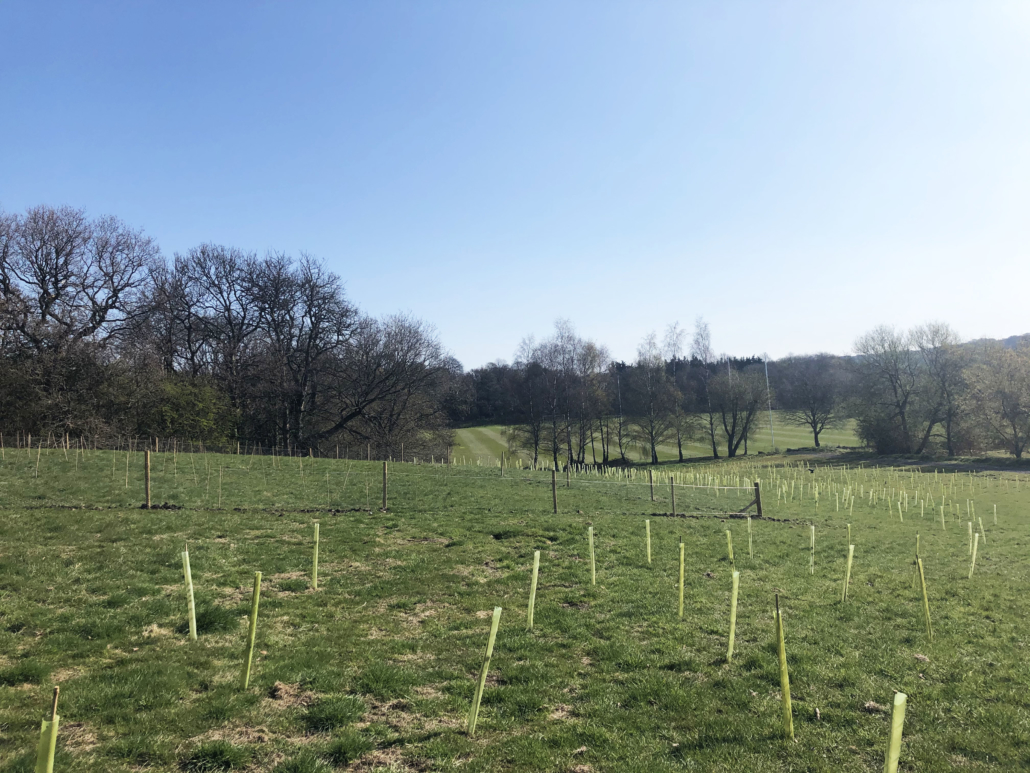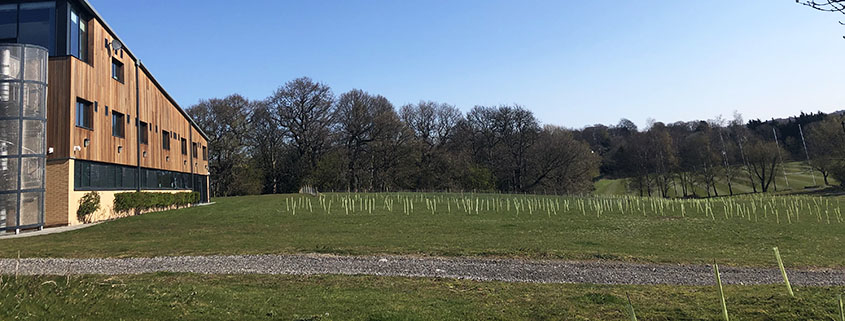5,000 trees planted at the Brownlee Triathlon Centre
Last updated on 25 May 2021
University of Leeds and the Environment Agency plant 5000 trees at the Brownlee Triathlon Centre as part of natural measures to reduce flood risk.
The University of Leeds in partnership with the Environment Agency have planted more than 5000 trees at the University’s Brownlee Triathlon Centre to reduce flood risk to the Leeds area downstream.
Tree planting at Bodington Playing Fields, where the Brownlee Triathlon Centre is located, took place between February and March, and is part of a wider programme of natural flood management techniques being introduced into the Leeds catchment as part of the Leeds Flood Alleviation Scheme’s flagship Natural Flood Management Project. The project is a great example of the University’s partnership approach to addressing the climate crisis through collaborative research and innovation.
The Brownlee Triathlon Centre and surrounding area was earmarked as the first urban pilot site last year as part of the Leeds Flood Alleviation Scheme’s Natural Flood Management Project – looking at alternative and sustainable ways to manage flood risk and increase resilience to climate change. This will work alongside, and complement, traditional engineering being implemented through the Leeds Flood Alleviation Scheme, whilst also creating habitat for wildlife and helping regenerate rural and urban areas through tourism.

The scheme is also part of the University of Leeds Living Lab programme, with the site to be used for live research projects to test sustainable solutions; be an integral part of University teaching, and be a location for local schools and communities to visit.
Five sites have been set up to implement natural flood risk management techniques throughout the river catchment from the source of the River Aire, at Malham, through to Leeds City Centre, and are using natural measures such as tree planting and woodland creation, wetland scrapes and leaky barriers to reduce flood risk and benefit the environment.
James Wright, Head of Grounds and Gardens at the University of Leeds, said:
“We are delighted to have been a key partner in this scheme and assisted in the planting of 5000 trees as part of the Leeds Flood Alleviation Scheme Natural Flood Management Project. This work has involved exceptional collaboration between academic and operational colleagues at the University of Leeds and the Environment Agency.
The site will provide significant research opportunities for University of Leeds students and academics for many years undertaking research in a range of specialisms. The site provides a great engagement opportunity for the local community to fully understand the range of NFM solutions installed in the Aire Valley catchment and research undertaken at the University.”
Fiona Sugden, The Environment Agency’s Leeds NFM Project Manager, said:
“It’s fantastic news that 5000 trees have now been planted at this site. The creation of a woodland area will have multiple benefits for people and wildlife – not just reducing flood risk downstream, but will benefit the environment by creating new woodland habitat, boosting biodiversity, help mitigate climate change, whilst also providing valuable opportunities for people to understand how well natural flood techniques perform.
The Triathlon Centre is a real asset for students and the local community, and we hope that visitors will also be able to learn about how effective natural flood management can be.”
Natural flood management is an important part of the Environment Agency’s strategy in protecting communities from flood risk and they work with natural processes and use natural flood management measures where they are technically feasible and provide good value.
It can be a cost-effective and sustainable way to manage flood risk alongside, and supporting, traditional engineering, while creating habitat for wildlife and helping regenerate rural and urban areas through tourism.
For more information about the University’s response to the climate crisis.
For out more about the University of Leeds Living Lab.




